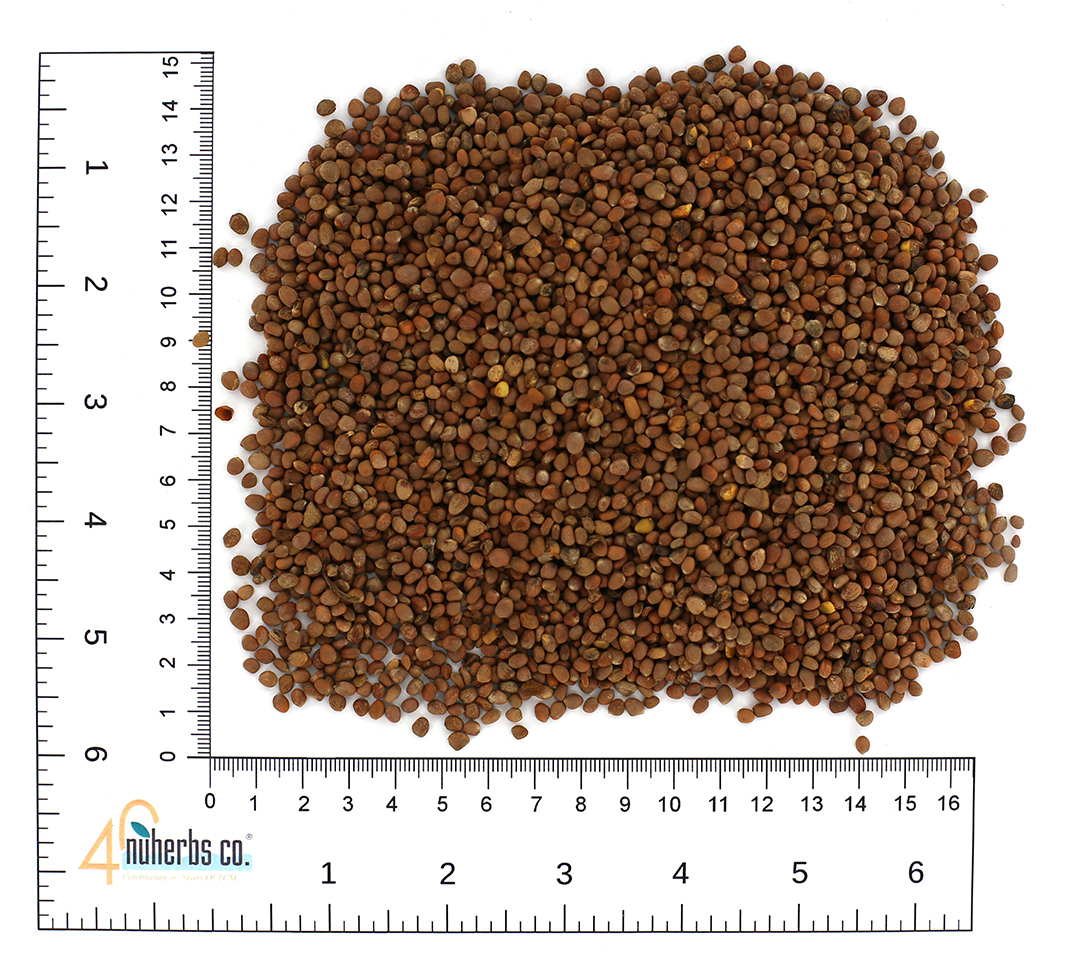Single Herb Glossary
Lái Fú Zǐ 萊服子

| Pharmaceutical name | Raphani Semen raphanus (sativus) seed, radish seed |
| Category | Food Stagnation |
| Key Properties | Transforms phlegm Reduces food stagnation Promotes the flow of Qi in LU, SP, and LI |
| Properties | Acrid Sweet Neutral |
| Tropism | LU, SP, ST |
| Actions & Indications | 1) Reduces Food Stagnation, Eliminates Distention 2) Causes Qi to Descend, Reduces Phlegm 3) Recently used for Hypertension |
| Dosages | 4.5-9g; should be crushed prior to use |
| Contraindications (TCM) | CI: Qi & Blood Def, absence of Food Stag, phlegm, or other form of Accumulation. Should not be taken long term (consumes Qi). Unless specifically used to induce vomiting, should be dry-fried. |
| Contraindications (Western) | |
| Chemical Composition | Erucic acid, raphanin, β-sitosterol, oleic acid, linolenic acid, linoleic acid, glycerol sinapate |
| Pharmacological Effects | • Antibiotic: minimum inhibiting concentration (MIC) of raphanin is 40 mcg/ml for S. aureus, 125 mcg/ml for Bacillus dysenteriae, 125 mcg/ml for Salmonella typhi, and 200 mcg/ml for E. coli • Antihypertensive: intravenous injection of extract demonstrated slow but prolonged antihypertensive effect in rabbits, cats and dogs |
| Herb-Drug Interactions | • This herb antagonizes or is antagonized by Ren Shen (Ginseng Radix) |
| Classical Formula(s) |
San Zi Yang Qin Tang (Three seed Decoction to Nourish One's Parents) 三子養親湯 |
This information is a reference tool for Chinese herbal studies. It is not intended to replace professional medical advice. Please consult a primary health professional if you require health advisory.
